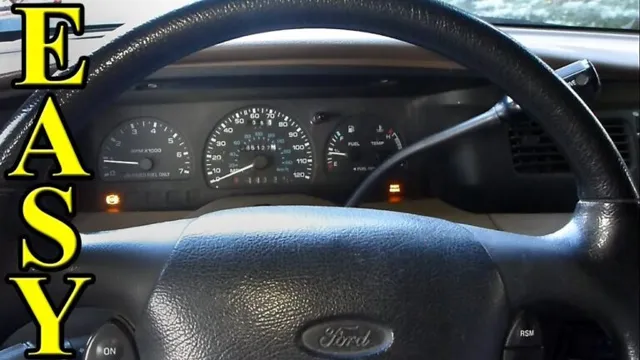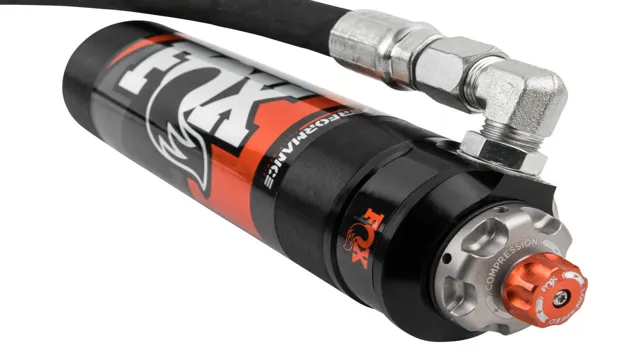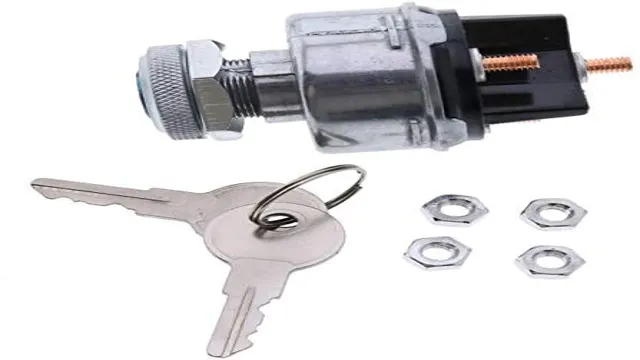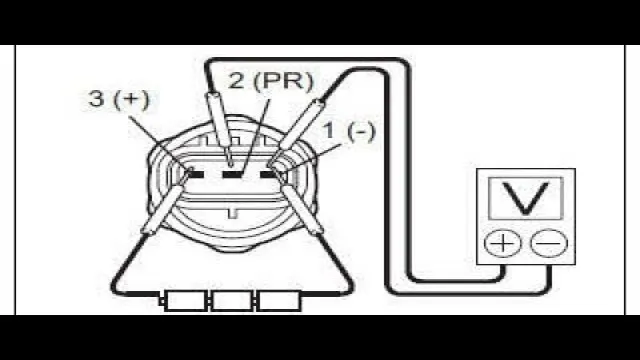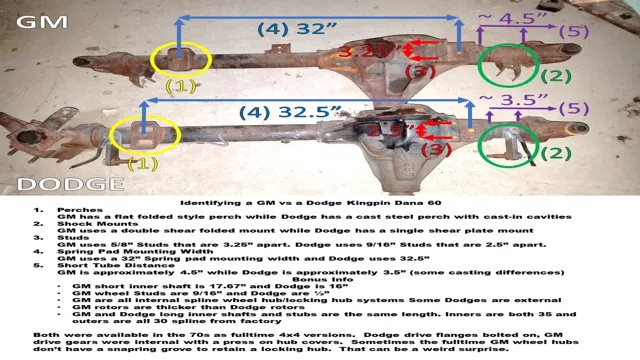Top 7 Proven Ways to Fix a Loose Gear Shifter in Your Automatic Vehicle
Is your gear shifter feeling loose or wobbly? Don’t panic, it’s a common problem that can be easily fixed with the right tools and knowledge. A loose gear shifter can make driving feel uncomfortable and even unsafe, but with a few simple steps, you can get your shifter feeling tight and secure once again. Think of it like fixing a wobbly table leg – a little adjustment here and there can make all the difference.
In this blog, we’ll walk you through the steps to fixing a loose gear shifter, so you can get back on the road with confidence. Let’s get started!
Identify the Problem
If you’re experiencing a loose gear shifter in your automatic car, you’re not alone. It’s a common issue that can be caused by various reasons. Firstly, the gear shifter cable may be stretched or worn out, leading to less tension in the cable that holds the shifter in place.
Another problem could be the shift linkage, which connects the gear shifter to the transmission. If this linkage is worn or damaged, it can cause the shifter to become loose. A malfunctioning shift solenoid or a faulty sensor that communicates with the transmission control module can also cause a loose gear shifter.
The best way to fix a loose gear shifter is to identify the root cause of the issue. Once you know what’s causing the problem, you can then decide whether to fix it yourself or take it to a professional mechanic. In any case, it’s important to address the problem as soon as possible to avoid any safety hazards on the road.
Listen for clicking or grinding sounds while shifting
When shifting gears in your car, it’s essential to listen for any clicking or grinding sounds, which could indicate a problem with the shifting mechanism. While the clicking noise may indicate a loose shift knob, grinding sounds when shifting are a more serious problem. There could be a range of reasons why your vehicle is making this noise.
It could be due to low transmission fluid, worn-out gears, damaged clutch plates, or a malfunctioning synchromesh mechanism. It’s crucial to identify the problem by taking your vehicle to a trusted mechanic as soon as possible. Delaying action could result in severe damage to your car, resulting in costly repairs.
Your car’s transmission is critical to its overall performance, and taking care of it should be a top priority. Remember; prevention is always better than cure when it comes to maintaining your car’s health. So, don’t ignore any strange sounds your car makes while shifting gears; it’s always better to be safe than sorry.
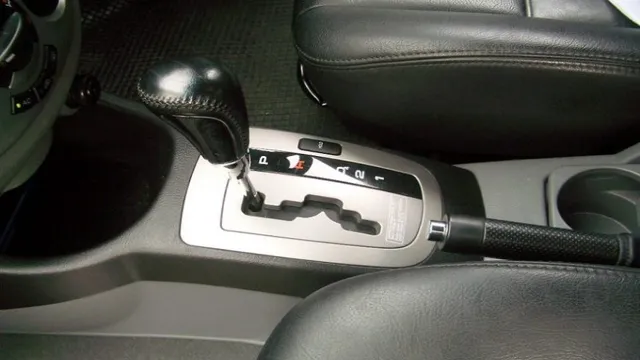
Check for worn bushings or mounts
If you notice your car shaking, rattling, or vibrating more than usual, it could be a sign of worn bushings or mounts. Bushings are rubber or polyurethane connectors that cushion and connect various parts of your car’s suspension system. Mounts, on the other hand, hold components like the engine and transmission in place.
Over time, these parts can wear down or become damaged, especially if you frequently drive on bumpy roads. If you’re not sure whether your bushings or mounts are the problem, take your car to a mechanic for an inspection. They’ll be able to identify the issue and recommend the right solution.
In some cases, you may need to replace the damaged parts outright, while in other cases, your mechanic might be able to repair them. Either way, it’s important to address the problem as soon as possible to avoid further damage to your car.
Adjust the Shifter Linkage
If you’ve noticed that your gear shifter in your automatic car has become loose or difficult to use, the most likely culprit is an issue with the shifter linkage. Fixing this issue is typically a fairly simple task that can be done at home. The first step is to locate the shifter linkage under the hood.
Once you’ve found it, inspect it for any obvious signs of wear or damage. If everything appears to be in good condition, you can try adjusting the linkage to see if that solves the problem. This can be done by loosening the bolts that hold the linkage in place and moving it slightly until the shifter feels tighter and more responsive.
It’s important to take your time with this step and make small adjustments until you find the sweet spot. Once you’ve tightened the bolts back up, test the shifter to make sure it’s working properly. With a little patience and attention to detail, adjusting your shifter linkage can be a quick and easy fix for a loose gear shifter in your automatic car.
Locate the linkage under the car
When your shifter feels loose or isn’t engaging correctly, it might be time to adjust the shifter linkage. To do so, you’ll need to locate the linkage under your car. This can be tricky, as different car models have different setups, but a good rule of thumb is to find the transmission and trace the shifter cables or rods leading from it.
Once you locate the linkage, you’ll need to determine what kind of adjustment it needs. Typically, you’ll need to adjust the length of the linkage to ensure that the shifter moves through its gears smoothly and accurately. This can be done with a few simple tools, such as a wrench or pliers.
Just remember to take your time and consult your car’s manual if you’re unsure of anything. Adjusting the shifter linkage is all about finding balance. You don’t want the linkage to be too loose, as this can cause the shifter to flop around and make it difficult to find the right gear.
On the other hand, if the linkage is too tight, it can be hard to shift at all, and you might even risk damaging your transmission. Finding the sweet spot can take some trial and error, but it’s worth it to have a smooth and responsive shifter. And with a little practice, you’ll soon be an expert at adjusting your shifter linkage whenever the need arises.
Loosen the locking nut
The shifter linkage plays a crucial role in your vehicle’s shifting mechanism. If you’re experiencing difficulty when shifting gears or your gears are slipping, then it may be time to adjust the shifter linkage. One of the first things you’ll need to do is loosen the locking nut.
This nut is typically located at the base of the shift lever. Once you’ve located it, turn it counterclockwise to loosen it. Be careful not to loosen it too much, or you may lose control of the shifter linkage altogether.
If necessary, refer to your vehicle’s user manual for specific instructions on how much to loosen the locking nut. By adjusting the shifter linkage, you’ll be able to improve your vehicle’s performance and ensure a smoother ride on the road. Remember to always prioritize safety and consult a professional if you’re unsure about making any adjustments yourself.
Reposition the linkage to improve tension
If you’ve noticed a lack of tension in your shifter linkage, the solution may be as simple as adjusting the linkage itself. Repositioning or tightening the linkage can help improve the tension in your shifter and make shifting smoother and more efficient. To adjust the linkage, start by locating it under the hood of your car.
Using a wrench or pliers, loosen the bolts or screws that hold the linkage in place. Reposition the linkage slightly, making sure to keep it aligned with the shifter and the transmission. Tighten the bolts or screws back into place and test out the shifter to see if the tension has improved.
With a little bit of effort, adjusting the shifter linkage can be a quick fix to a frustrating problem.
Tighten the locking nut back
Adjusting the shifter linkage on your vehicle is essential to ensuring a smooth ride. If you notice that your car is not shifting as smoothly as it should, then it may be time to adjust the shifter linkage. To adjust the linkage, you need to start by locating the linkage where it attaches to the transmission.
You will see a locking nut that secures the linkage to the transmission. Use a wrench to loosen the locking nut. Once the nut is loose, adjust the linkage by moving it up or down until it sits in the proper position.
Tighten the locking nut back and test drive your vehicle to see if you notice a difference. If you feel that the shifter is still not shifting as smoothly as it should, then you may want to take it to a professional mechanic to get it looked at. By taking care of your vehicle’s shifter linkage, you’re not only ensuring a smooth ride, but you’re also preventing future issues that could lead to costly repairs.
Replace any worn parts
If you’re experiencing a loose gear shifter in your automatic car, the first thing to do is to check for any worn or damaged parts. The shifter mechanism is made up of several components that work together to shift the gears in your car. Over time, these parts can become worn or damaged, leading to a loose or sloppy shifter.
Some common culprits are worn bushings, a loose cable, or a damaged shifter arm. Fortunately, replacing these worn parts isn’t too difficult, and can usually be done with basic tools. Be sure to refer to your car’s manual or a reputable mechanic for guidance on replacing specific parts.
With a little elbow grease, you should be able to get your shifter feeling tight and responsive again in no time!
Replace the bushings or mounts if damaged
If you notice any damage or wear and tear on the bushings or mounts of your vehicle, it’s essential to get them replaced as soon as possible. These parts are responsible for providing stability to the suspension system and ensuring a smooth ride. Often, worn or damaged bushings or mounts can cause excessive noise, vibrations and affect the overall performance of your vehicle.
Replacing these parts is a simple task that can be done quickly and affordably. It’s important to choose high-quality replacement parts that meet or exceed OEM standards for maximum effectiveness. By replacing any worn parts on your vehicle’s suspension system, you can ensure a safe, comfortable, and smooth ride every time you hit the road.
Check for damage in the transmission or drivetrain
When you notice any issues with your vehicle’s transmission or drivetrain, it’s essential to check for any signs of damage and replace any worn parts. Neglecting to do so can lead to further and more severe problems down the road. One of the most common symptoms of transmission or drivetrain damage is unusual noises, such as whining or grinding sounds.
If you hear these sounds coming from underneath your vehicle, it could be a sign of worn gears or bearings. Another symptom of transmission problems is difficulty shifting gears. If you find that your gearshift is stiff or your car doesn’t want to go into gear or won’t shift properly, your transmission may be failing.
When you encounter any of these signs, it’s always best to take it to a licensed mechanic to check it out. The drivetrain is responsible for transferring power from the transmission to the wheels, and it includes several components like the driveshaft, axles, and differential. Over time, these parts can wear down, causing problems with your vehicle’s performance.
A damaged driveshaft can cause your car to vibrate during acceleration, while worn axles can result in clunking noises or difficulty turning. If your differential is the issue, you may notice odd noises while driving or uneven tire wear. Replacing any damaged parts in your drivetrain is essential for maintaining your vehicle’s overall health and performance.
In conclusion, taking care of your vehicle’s transmission and drivetrain is crucial to keep it running smoothly and avoid more expensive repairs down the line. When unusual sounds or shifting issues arise, it’s essential to check for damage and replace any worn parts. Remember, regular maintenance and inspections by a licensed mechanic can catch small issues before they turn into significant problems.
So, if you want to keep your vehicle healthy and running at its best, make sure you pay attention to your transmission and drivetrain.
Test the shifter
So, you’ve noticed that your automatic gear shifter seems a bit loose and you’re not quite sure what to do about it. Don’t worry, you’re not alone. A loose shifter can be caused by several things, but it’s important to first test the shifter before attempting to fix it.
Start by putting your car in park and turning it off. Then, wiggle the shifter to see if it moves easily or feels loose. If it does, it could be a sign of a worn shifter cable or a loose linkage.
Another thing to look for is if the shifter feels like it’s not fully engaging in each gear position. This could indicate a problem with the shifter mechanism in the transmission. Whatever the case may be, it’s important to properly diagnose the issue before attempting any repairs.
By doing so, you can avoid causing further damage or potentially making the problem worse. So, take the time to test the shifter and figure out the root cause of the issue. With a little bit of research and the right tools, you can fix a loose gear shifter in no time.
Shift through all gears to ensure proper alignment
When you’re driving a manual transmission, the shifter is your direct connection to the gears. That’s why it’s crucial to test the shifter and make sure everything is aligned properly. To do this, shift through all the gears – first, second, third, fourth, and fifth (or sixth, if you have it) – and pay attention to how the shifter feels as you move it.
It should feel smooth and effortless, with no grinding or difficulty engaging each gear. If you notice any problems, it could indicate a misalignment that needs to be fixed. It’s also important to pay attention to how the shifter feels when you’re shifting into reverse gear.
Reverse is often located in a different position than the other gears, so make sure you’re making a deliberate movement with the shifter to avoid accidentally damaging the transmission by grinding gears. By taking the time to test the shifter, you can ensure a smooth and safe driving experience.
Test drive the vehicle to ensure proper function
When test driving a vehicle, it’s important to check that all of its functions are working properly. One essential component to test is the shifter. The shifter is what allows the driver to change gears, and if it’s not functioning correctly, it could be indicative of more significant issues with the transmission.
To test the shifter, get a feel for how it moves between gears. It should be smooth and easy to shift between gears without any strange noises or resistance. Pay attention to any vibrations or jerky movements as you shift, as these could be indicators of transmission problems.
Additionally, try shifting while in motion to ensure the shifter engages smoothly and without any resistance. A properly functioning shifter is essential for a safe and enjoyable driving experience, so take the time to test it thoroughly before purchasing a vehicle.
Conclusion
In conclusion, fixing a loose gear shifter in an automatic can be quite a task, but with some patience and a bit of elbow grease, anyone can become a DIY pro. Just remember to loosen the right screws, adjust the cable tension, and tighten everything back up, and your ride will be shifting smoother than a hot knife through butter. And who knows, you may even impress your mechanic with your newfound skills.
So go ahead, take the plunge, and shift your driving experience into high gear!”
FAQs
What causes a loose gear shifter in an automatic transmission?
A loose gear shifter in an automatic transmission can be caused by worn out bushings, a faulty shift cable, or a misaligned shift linkage.
Can a loose gear shifter be fixed without going to a mechanic?
Yes, a loose gear shifter can be fixed without going to a mechanic by replacing worn out bushings, adjusting the shift cable, or realigning the shift linkage.
How much does it cost to repair a loose gear shifter in an automatic transmission?
The cost to repair a loose gear shifter in an automatic transmission varies depending on the cause of the problem. It could range anywhere from $50 for a simple adjustment to $500 for a complete cable or linkage replacement.
What are the signs of a loose gear shifter in an automatic transmission?
The signs of a loose gear shifter in an automatic transmission include difficulty shifting gears, gear shift feels loose or wobbly, gear shift lever moves too freely, or the gear indicator is not aligned with the actual gear.

